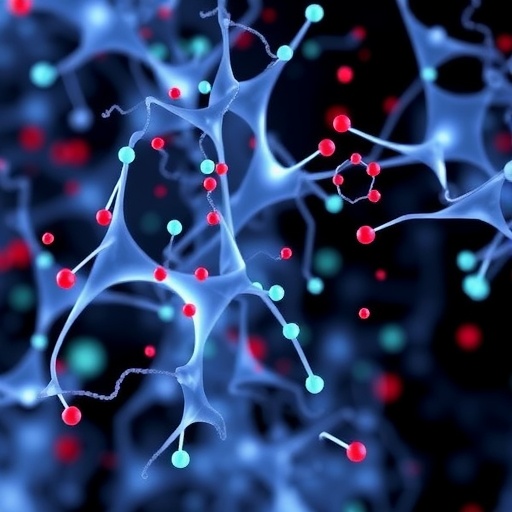In a groundbreaking study led by Zhang, Ren, and Chen, researchers have unveiled critical insights into how transcranial alternating current stimulation (tACS) influences spatial cognition in mice, illustrating distinct variations based on sex. This intricate investigation focused on two specific frequencies of tACS—10 Hz and 40 Hz—both of which are at the forefront of neuroscientific research for their promising applications in cognitive enhancement. The findings not only expand our understanding of the nuanced effects of brain stimulation but also open up new avenues for exploring gender-specific approaches in neuroscience.
The advent of brain stimulation techniques such as tACS has transformed the field of cognitive neuroscience. By delivering alternating currents to the scalp, researchers can modulate neuronal activity, thereby influencing cognitive functions like memory and spatial awareness. In this case, the frequencies selected—10 Hz and 40 Hz—correspond to varying aspects of brain waves associated with cognitive processes. The rationale behind choosing these specific frequencies lies in previous research demonstrating their potential impacts on cognitive modulation. The results from this study advance the hypothesis that brain stimulation could be tailored to optimize cognitive abilities based on individual characteristics.
An intriguing aspect of the study is the focus on sex differences. Historically, neuroscience has often overlooked how male and female brains may respond differently to various stimuli. This study sought to bridge that gap, offering a powerful contribution to the understanding of sex as a biological variable in cognitive neuroscience. The researchers engaged male and female mice to assess how each group responded to tACS at both frequencies. This gendered approach is not only innovative but also critical, given that performance and brain response can vary significantly between the sexes, a factor that is frequently ignored in experimental design.
Using a rigorous experimental framework, the researchers employed behavioral tests to evaluate spatial cognition performance in the subjects. These tests included maze navigation tasks designed to measure the efficiency with which the mice could locate a hidden platform. The outcomes provided significant data that illustrated how each sex responded to the different stimulation frequencies, allowing for a comprehensive analysis of the effectiveness of each protocol. It became evident that the interplay between sex and tACS frequency plays a pivotal role in shaping cognitive outcomes, highlighting the necessity for more inclusive research methodologies.
The results revealed a fascinating trend: males generally demonstrated enhanced spatial cognitive performance under 10 Hz tACS, while females showed superior results with 40 Hz stimulation. This divergence suggests that sex influences not only the efficacy of tACS but also the fundamental workings of spatial cognition in the brain. Such revelations could reshape how researchers and clinicians approach cognitive enhancement through stimulation techniques, advocating for customized protocols that consider sex as a determinant in treatment plans.
The implications of these findings are substantial, particularly in the context of developing non-invasive interventions for cognitive decline. As the global population ages, understanding the mechanisms behind spatial cognition becomes increasingly important. By employing tailored tACS protocols based on sex differences, researchers could potentially improve cognitive outcomes for various demographic groups more effectively. This study serves as a clarion call for future research to adopt a gendered perspective on cognitive training and remediation, which is sorely needed in a field where “one-size-fits-all” solutions may not suffice.
Moreover, the exploration of brain stimulation methods has garnered interest beyond the laboratory, with applications extending into clinical settings. Conditions such as Alzheimer’s disease and other forms of dementia could benefit from these findings, as targeted stimulation may enhance memory retention and navigational skills in affected individuals. Importantly, translating these findings from animal models to human subjects will require careful consideration and additional research, as the complexities of the human brain are manifold.
In tandem with the growing acceptance of tACS as a viable cognitive enhancement tool, ethical considerations also emerge. As with any intervention that modifies brain function, there is a responsibility to ensure that these techniques are applied safely and responsibly. The prospect of enhancing cognitive abilities leads to questions about accessibility, consent, and potential misuse. Researchers must tread carefully, prioritizing ethical frameworks that guide the application of these techniques in real-world scenarios.
Ultimately, this study conveys a sense of urgency for advancing our understanding of cognitive neuroscience through a lens that considers both biological and behavioral dimensions. The ongoing exploration of sex differences in cognitive processes serves not just to enrich neuroscience but to foster a more equitable approach to cognitive health. In a world where cognitive decline poses profound societal challenges, the solutions must be as dynamic and nuanced as the human brain itself.
Future investigations building upon Zhang et al.’s work will likely delve deeper into the mechanisms underpinning these sex differences in response to tACS. This could include exploring the neurophysiological pathways involved, as well as integrating hormonal influences that may modulate the effects of brain stimulation. Furthermore, understanding how various environmental factors interact with biological predispositions could yield additional insights for optimizing cognitive enhancement strategies.
As this field of study continues to evolve, researchers are encouraged to adopt an interdisciplinary approach, drawing insights from genetics, psychology, and social sciences. Such collaboration could illuminate the pathways through which sex, genetics, and environmental factors converge to shape cognitive outcomes. By embracing this complexity, the scientific community can move towards more holistic understandings of brain function and cognition, ultimately paving the way for innovative therapies that address the needs of all individuals.
For those intrigued by the intricacies of brain stimulation and cognitive function, the groundbreaking findings by Zhang and colleagues represent a vital chapter in the narrative of neuroscience. As researchers embark on the journey to understand cognitive enhancement through sex-specific lenses, the potential to revolutionize our approaches to cognition and memory awaits, shaping the future of cognitive neuroscience.
This study serves as a catalyst for conversation around the importance of sex differences in the brain. By shedding light on the unique responses of males and females to tACS, Zhang et al. pave the way for a more inclusive understanding of how we can leverage technology to enhance cognitive abilities. The quest for knowledge in this field is far from over; it is only just beginning.
The future of neuroscience might well hinge on incorporating a broader array of factors—biological sex included—into the exploration of cognitive enhancement. As we continue to harness the power of technologies like tACS, understanding their nuanced effects across diverse populations will be a key to unlocking the full potential of cognitive science.
The revelations from this study do not merely inform research agendas; they challenge scholars, clinicians, and policymakers alike to rethink how they approach cognitive health. Emphasizing precision medicine and individualized care, the implications stretch across disciplines, urging an alignment of efforts towards a future where cognitive enhancement is as nuanced as the human experience itself.
In conclusion, Zhang, Ren, and Chen’s research contributes vital knowledge to the intersection of sex, cognition, and brain stimulation technology. By recognizing and exploring these differences, the study not only enriches cognitive science but also sets the stage for a new era of personalized cognitive health approaches, potentially transforming how we understand and enhance cognitive abilities in diverse populations around the globe.
Subject of Research: Effects of transcranial alternating current stimulation on spatial cognition in mice based on sex differences.
Article Title: Sex differences in the effects of 10 Hz and 40 Hz transcranial alternating current stimulation on spatial cognition in mice.
Article References: Zhang, Y., Ren, P., Chen, Z. et al. Sex differences in the effects of 10 Hz and 40 Hz transcranial alternating current stimulation on spatial cognition in mice. Biol Sex Differ 16, 89 (2025). https://doi.org/10.1186/s13293-025-00778-5
Image Credits: AI Generated
DOI: https://doi.org/10.1186/s13293-025-00778-5
Keywords: transcranial alternating current stimulation, spatial cognition, sex differences, cognitive enhancement, neuroscience
Tags: brain wave frequencies and cognitioncognitive enhancement techniquescognitive functions and sex variationseffects of brain stimulation on cognitiongender-specific neuroscience approachesimplications of tACS in researchindividualized cognitive optimizationmodulation of neuronal activityneuroscientific research advancementssex differences in cognitive neurosciencespatial cognition in micetranscranial alternating current stimulation





